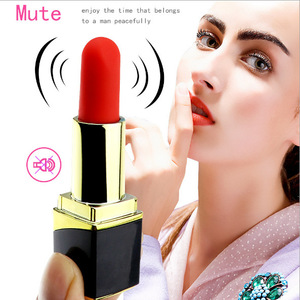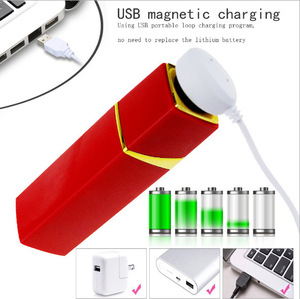
All categories
Featured selections
Trade Assurance
Buyer Central
Help Center
Get the app
Become a supplier

(942 products available)




















































Finger cots are small devices, sometimes known as finger sleeves. These are designed to stretch over an individual’s fingers or even parts of the palm. In this situation, the finger cots are manufactured from different materials and serve numerous functions. Some of the common materials used to create these cots include latex, silicone, nitrile, and vinyl. All of which are used for different purposes.
Here are the various types of finger cots based on the material and purpose:
Latex finger cots
Latex finger cots are very elastic and have a very good grip. This makes them very comfortable to wear in most cases. Latex cots are used in the medical industry to protect the patient. Usually, these cots are used in applications that require sensitivity, for example, medical examinations, and procedures because of their ability to fit comfortably and snuggly.
Silicone finger cots
These finger cots are very soft and even more flexible when compared to latex. Most commonly, the cots are used for medical applications. They also can be used in industries where there are a lot of allergic reactions to latex. Silicone cots are, at the same time, more durable. This means they can be easily cleaned and, therefore, reusable.
Nitrile finger cots
Nitrile's elasticity and high durability do not only make it ideal for use in work environments that deal with chemicals. Also, it is resistant to punctures and tears. It has an oily and wet surface. Individuals who work in mechanics or even electronics find these cots quite useful.
Vinyl finger cots
In cases where there is a need for a disposable and inexpensive covering, finger cots made from vinyl are very useful. These are also a good option if one is sensitive to latex since they do not contain any latex. However, finger cots have a shorter lifespan. Therefore, they are better suited for situations in which not-so-great protection is needed.
Reinforced finger cots
Reinforced finger cots do have durability and extra protection in areas that are stressed. These devices are applicable for protection from chemical exposure or heat. The reinforced areas are designed to provide extra protection. These cots are most commonly used in industries where mechanized work is dominant.
Healthcare sector
Though finger cots can be used in other sectors, they are predominantly in the healthcare sector. This is due to their role in hygiene and infection control.
Manufacturing and Industrial Applications
Finger cots are valuable in manufacturing sectors, especially when dealing with substances like chemicals, oils, and greases that require precautions. Nitrile and vinyl finger cots are resistant to chemicals and are suitable for such environments. They protect workers from skin irritations, including injuries, while also prolonging the lifespan of equipment.
Electronics and assembly work
For delicate work, especially with electronics, finger cots have proved useful in this line of work. They are useful for protecting both components and circuit boards from contaminants. In their durability and protection from static and chemicals, Nitrile and silicone cots are useful in reducing defects and ensuring quality control in manufacturing processes.
Food Industry
Vinyl finger cots are popular in the food industry since they are a safe and economical approach to maintaining hygiene. From food handling to processing, these finger cots aid in preventing contamination and safeguarding workers from contact with chemicals and substances that may be hazardous.
Cosmetics and Personal Care
Finger cots have a role in the cosmetic and personal care industry, especially during application and testing. This is to avoid contamination of products and to maintain hygiene. Silicone finger cots are useful for individuals who wish to avoid irritation caused by allergic reactions to latex. They are often used in activities such as applying makeup and skin care treatments in this industry.
Art and Craft
Finger cots are also useful for artists and crafters who work with delicate materials such as clay, paint, or fabric. This protection allows them to shape materials, manipulate intricate details, and apply products without risking harm to their hands. About crafts, specifically, custom finger cots, which can be adapted and improved, give room for comfort while inserting an artistic touch.
The health and quality of finger cots correspond directly to the quality and durability of the materials used in making them. For instance, latex finger cots are needed to be disposable due to their elasticity. The lifespan of these cots is affected as they are more likely to degrade over time through wear and tear. Silicone finger cots, however, are firmer, and they can last longer, hence being suitable for multiple uses.
Considered more durable than latex, nitrile finger cots are good for industrial use. They can withstand chemicals and are puncture-resistant. Finger cots made from vinyl are ideal in scenarios where cost is more important than quality. These are suitable for light activities and do not guarantee great durability.
Reinforced finger cots come in handy for activities that are demanding physically. They are designed to withstand wear and tear and are durable in terms of quality, making them suitable for prolonged occupational use.
Thickness and tensile strength
The durability of finger cots can be measured not only by their thickness but also by their tensile strength. Thus, thicker cots usually provide better protection; at the same time, higher tensile strength cots protect against tearing or puncturing. In harsh industrial environments, cots with both features are essential.
Environmental Resistance
In addition to chemical resistance, Nitrile and silicone finger cots exhibit durability against extreme temperatures. While silicone cots are meant to be used for extended periods due to their heat resistance, Nitrile is suited to environments where oil and grease are found.
Wear and degradation
Latex finger cots are quite elastic. They are resistant to tearing under normal use, but they will eventually degrade due to wear and environmental factors such as exposure to chemicals, oils, and UV light. This degradation manifests as brittleness, loss of elasticity, and visible cracks or holes. To ensure safety, latex cots should be replaced periodically, especially in demanding or extended applications.
Surface texture and grip
Factors like this ensure the protection of the fingers and improve quality. In scenarios where the tasks have to be done delicately, a good grip is important.
It is vital that the purpose and environment in which one will be using finger cots should be a guide in selecting the appropriate ones. Here, consider factors such as safety, comfort, and price. Below are a few considerations to take into account in making this decision.
Material composition
The material from which a finger cot is formed is essential when considering allergic reactions and comfort. Although the comfort levels in latex cots are higher, people who are allergic to latex might want to go for silicone or nitrile. The latter is more suitable for industrial use due to its durability and resistance to chemicals.
Fit and flexibility
A good-quality finger cot should fit snuggly to the fingers but also be flexible. This is suitable when working with details. Measurements or customizable options allow for a more comfortable and functional product.
Cost and disposability
Finger cots made from vinyl are often less expensive and are useful when used once. If the cost is of concern and the job requires one to use several cots within a short span of time, the cots should be economical or even reusable, which would be more beneficial.
Length and coverage
Excluding fingertip cots, which offer protection to just the fingertips, there are long cots that cover part or the whole finger. The latter is better for protection in dangerous jobs since they provide better coverage.
Industry standards and certifications
One of the important ways to maintain safety and functionality is by ensuring that finger cots conform to industry standards. This applies especially in healthcare and food service industries. To ensure reliability, check for any certifications while selecting them.
Q1: What are finger cots made of?
Finger cots are made from latex, silicone, nitrile, and vinyl.
Q2: How do I know which type of finger cot to choose?
When selecting finger cots, it is vital to put the purpose and the environment in which they will be used into consideration. These are comprised of the operations that determine comfort, safety, durability, and protection against allergens.
Q3: Are finger cots reusable, and how long do they last?
It depends on the material of the finger cots. Silicone cots can be cleaned and reused, and they are also long-lasting. Cots made of latex and vinyl are to be disposed of after one use.
Q4: Do finger cots protect against chemicals and heat?
Nitrile finger cots are highly resistant to chemicals and are heat conductive. This makes them suitable for jobs in hazardous conditions.
Q5: Are there custom-size finger cots available?
There are various stock sizes of finger cots, but many manufacturers offer customizable options. These options are developed to ensure a more comfortable fit for specific needs.